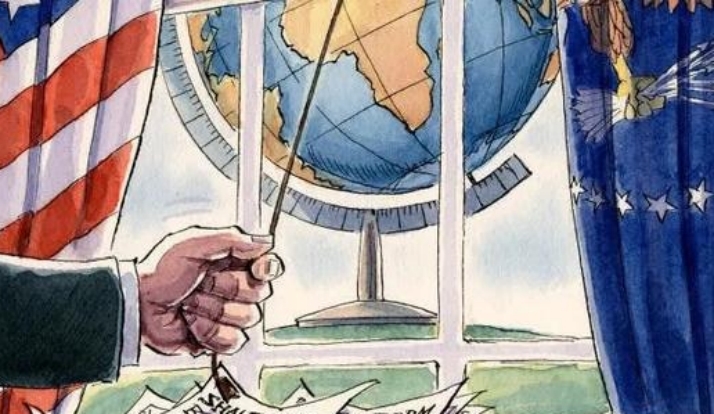
The skies over the Persian Gulf are thick with smoke, and the nerves of the global energy market tremble with the trajectory of missiles. As the conflict between Israel and Iran enters its sixth day, attacks on energy infrastructure have shifted from threats to reality: flames engulfed facilities at Iran’s South Pars Gas Field—the world’s largest—forcing one offshore platform to halt production and causing a daily loss of 12 million cubic meters of capacity; thick smoke billowed from Tehran’s Shahran oil storage depot; and the power facilities of Israel’s BAZAN Group refinery were severely damaged in retaliatory strikes, halting all production. Against this fiery backdrop, Shell CEO Wael Sawan spoke gravely at the Asia Energy Forum in Kuala Lumpur: "The past 96 hours have been deeply concerning... the trajectory of the global energy system is alarming."
The shadow of the Strait of Hormuz looms over the entire energy market. This narrow waterway, spanning just 38.9 kilometers, carries the lifeblood of the global economy—approximately 20.9 million barrels of crude oil daily (20% of global consumption), along with vast quantities of liquefied natural gas, pass through it en route to destinations worldwide. As Iran’s Revolutionary Guard hinted at a possible blockade, the shipping landscape is already being redrawn: reports from BIMCO (Baltic and International Maritime Council) reveal that more vessels are actively avoiding the route; S&P Global Intelligence warns that such a threat "is enough to cause serious disruption to shipping." Although JPMorgan analysts assess the probability of a full blockade as "extremely low," citing that "such events have never occurred," the market remains on edge—during the Iran-Iraq War, shipping risks in the Strait sent tanker freight rates soaring by 50%-100%, and today, Iran’s naval stockpile of mines and anti-ship missiles far exceeds that era.
International oil prices have been thrust onto an ejection seat, lurching violently amid the flames of war. Following Israel’s airstrike on Iran on June 13, WTI crude surged 8.5% to break through $74 per barrel, while Brent crude spiked 8.2% to top $75, marking a five-month high. Though prices retreated slightly on the 17th, a single-day jump of over 4% reaffirmed market fragility. Financial models are already simulating worst-case scenarios: JPMorgan warns that a Strait blockade could push oil to $120-$130 per barrel; Deutsche Bank’s extreme forecast similarly points to $120. This panic is not unfounded—Lipow Oil Associates calculates that if shipping through the Strait is obstructed, prices could rocket to $100, far exceeding the $7.5 increase projected from merely losing Iranian oil exports.
Oil giants tread a perilous tightrope of geopolitics. TotalEnergies CEO Patrick Pouyanné prioritized employee safety: "We are the largest international oil company in the Middle East, with operations across Iraq, Qatar, and Saudi Arabia. An attack on any facility would trigger a global market tsunami." Supply chain fragility was laid bare at the Kharg Island hub—responsible for 90% of Iran’s oil exports—now at a standstill. Data from the London Exchange showed zero tankers docking there earlier this week. RBC Capital Markets speculates the U.S. may have dissuaded Israel from targeting this hub, but as conflict escalates, 4% of global seaborne crude exports hang by a thread. ExxonMobil CEO Darren Woods attempted to soothe markets: "Global supply can absorb the loss of Iran’s 1.6 million barrels per day." But he swiftly added, "If Strait shipping halts, the problem becomes entirely different."
As oil futures curves steepen, a quiet battle for alternative capacity unfolds. Though OPEC+ holds 3 million barrels per day of idle capacity, its May increase was a mere 180,000 barrels—far below the planned 410,000. Saudi Arabia faces a dilemma: its fiscal breakeven requires $80 oil, but if conflict worsens, it may have to tap spare capacity. U.S. shale operators scent opportunity—drilling rigs in the Permian Basin surged by 27 in a single week, racing to capture market share. Energy map redrawing accelerates: India activated its Chabahar Port alternative plan; Asian buyers pivot to Russian and African crude; Japan even announced a national oil reserve alliance. Nations worldwide are preparing for the worst.
"2025 is shaping up to be a turbulent year," sighed EnQuest CEO Amjad Bseisu, capturing the industry’s mood. From the plains of Ukraine to the Persian Gulf, geopolitical storms are redefining energy security. As oil giants gaze upon the raging waves of the Strait of Hormuz, the global economy’s vessel sails into uncharted waters—20% of the world’s oil trade hangs in the balance, and the era of energy autonomy and diversification accelerates amid the roar of cannons.

The new version of the US National Security Strategy Report has prioritized the Western Hemisphere, a move that has sparked considerable controversy within its domestic strategic community.
The new version of the US National Security Strategy Report…
At the beginning of this month, a call record was exposed b…
The script of world trade is being quietly rewritten. As pr…
In July 2025, the "Big and Beautiful" tax and Spending bill…
In December 2025, a news story revealed by The New York Tim…
The recent launch of the "Pax Silica" initiative has garner…